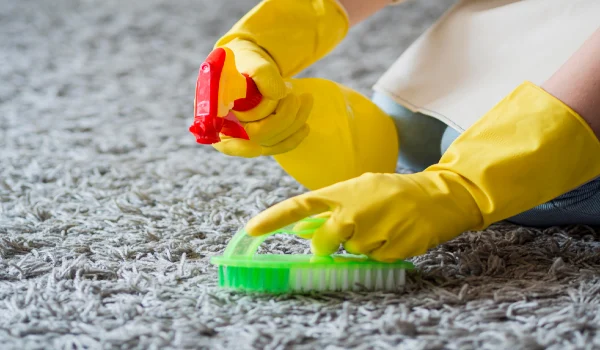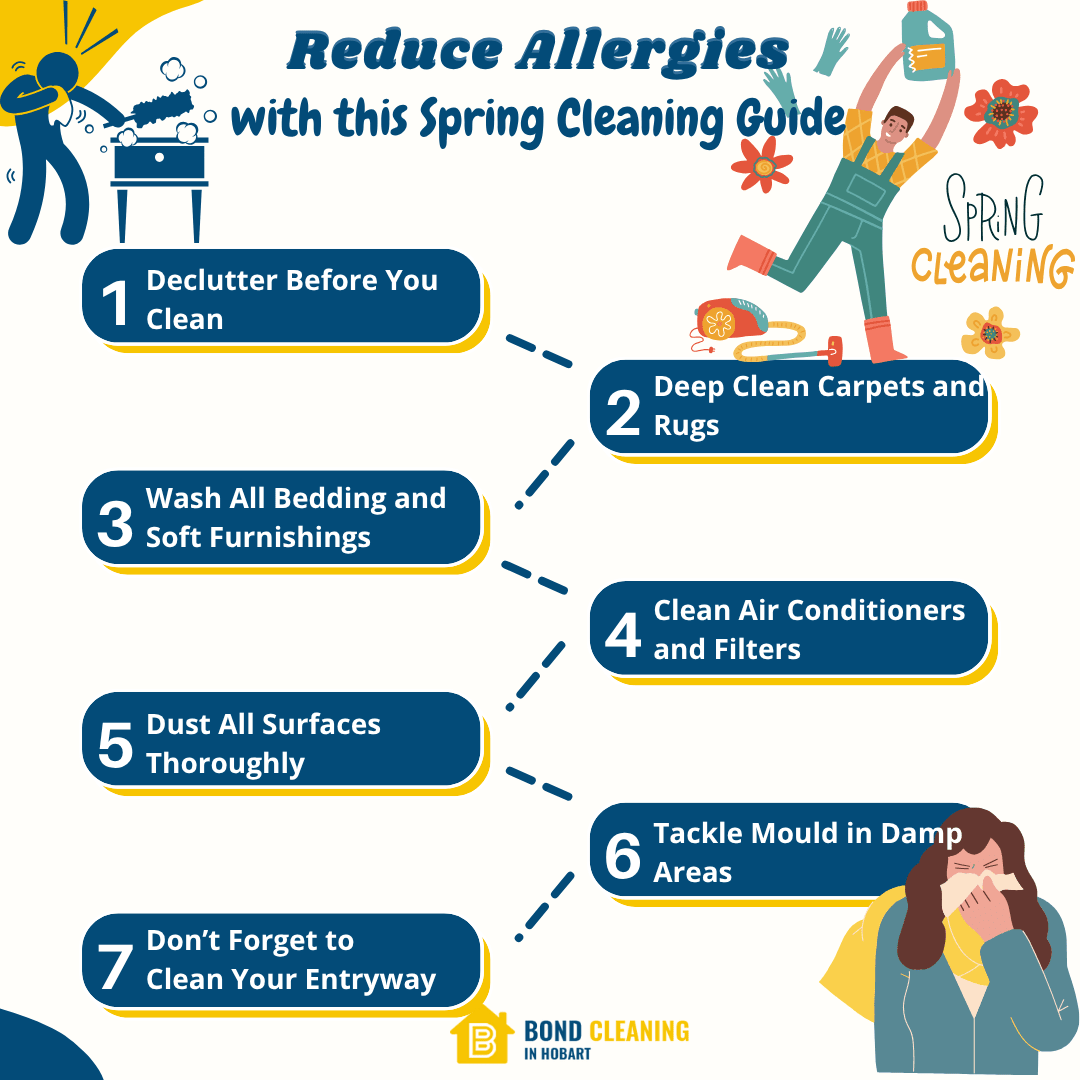The Ultimate Spring Cleaning Checklist To Reduce Allergies
Spring is a season of blooming flowers, fresh air and, unfortunately, unbearable allergies for some. As the temperature rises and windows open to welcome the breeze, allergens like pollen, dust mites and mould spores find their way into your house. This triggers sneezes, itchy eyes and stuffy noses. While spring is meant to be a refreshing time of the year, it often turns into months of discomfort if you are sensitive to these common triggers.
But there is a way to breathe easy this season. This blog provides a complete spring cleaning checklist that focuses on allergens lurking in hidden spots. Deep cleaning not only refreshes your living space, but it also removes allergens that accumulate during the winter. Whether you’re deep cleaning for the warmer months ahead or preparing for a professional bond cleaning Hobart inspection, these tips will help keep your home clean and allergy free during spring.
Hide
Show
]1. Declutter Before You Clean
Decluttering is the first and most important step. Over time, extra items like books, cartons, old clothes and unused decor collect dust. Begin with visible surfaces such as tables, shelves, and worktops, and eliminate anything you no longer need.
Then proceed to the hidden storage areas. Declutter under beds, wardrobes and cabinets. This reduces the accumulation of dust and makes cleaning much easier. Also if you plan for bond cleaning in Hobart, decluttering now can save you time and frustration later.
2. Deep Clean Carpets and Rugs

Carpets and rugs often act as a magnet for dust mites, pollen, and pet dander. Regular vacuuming is insufficient during allergy season. To thoroughly clean, use a vacuum with a HEPA filter, which traps microscopic allergens rather than releasing them back into the air.
After vacuuming, consider steam cleaning or professional carpet cleaning services. This removes embedded dirt and allergens effectively. If allergies persist despite cleaning, think about replacing heavy carpets with washable rugs that are easier to maintain throughout the year.
3. Wash All Bedding and Soft Furnishings
Your bed is a hotspot for dust mites, which can worsen allergy symptoms. Wash all bedding, including sheets, pillowcases, blankets, and mattress protectors, in hot water once a week to kill mites and remove allergens.
Do not stop at your bed. Wash all pillow coverings, throws, and curtains. If feasible, replace heavy curtains with shades or lightweight fabric that is easy to clean. To efficiently minimise dust buildup on non washable curtains, vacuum them with an upholstery attachment.
4. Clean Air Conditioners and Filters
Air conditioning units circulate indoor air, so if filters are clogged with dust and pollen, they’ll spread allergens throughout your home. Clean or replace your AC filters before using them this spring.
Additionally, clean the air vents and ensure that no mould is growing around the unit. Hiring professionals to clean the ducts once a year can help to improve air quality even more. This is especially useful if you’re preparing your property for bond cleaning Hobart, as it improves the indoor environment and overall hygiene.
5. Dust All Surfaces Thoroughly
Dust is one of the most common allergy triggers. Spring cleaning is incomplete without dusting every nook and cranny. Start from the top, ceiling fans, light fixtures, and wall corners and move downwards to shelves, furniture, and skirting boards.
Instead of spreading dust into the air, trap it with a damp microfibre cloth. Don’t overlook spots like behind televisions, appliances, and window sills. Cleaning blinds with a vacuum attachment or a damp cloth effectively decreases dust.
6. Tackle Mould in Damp Areas
Mould spores grow in moist spaces like bathrooms, kitchens and laundry rooms, causing allergies and respiratory problems. Inspect corners, grout lines, under sinks, and near windows for evidence of mould growth.
To properly clean these areas, use an anti mould cleanser or a vinegar water solution. Keep windows open or use exhaust fans while cooking or bathing to reduce moisture levels and prevent mould formation.
7. Refresh Mattresses and Upholstery
Mattresses and upholstered furniture trap dust mites, dead skin cells, and allergens over time. Vacuum your mattress using an upholstery attachment and sprinkle baking soda over it before vacuuming it again to deodorise and remove allergens.
Vacuum sofas and chairs from all sides, including hidden crevices. If your upholstery is washable, follow the manufacturer’s directions to clean the cushion covers or fabric surfaces. Regularly airing mattresses and pillows in sunlight can also effectively eradicate bacteria and mites.
8. Don’t Forget to Clean Your Entryway
Your entryway is the first point where allergens enter. Put doormats outside and inside your door to gather pollen and grime. These mats should be cleaned once a week and, if possible, washed.
Also, try implementing a ‘no shoes indoors’ policy to prevent outside allergens from spreading throughout your home. Having a designated shoe rack or storage area at the door makes this habit easy for family members and guests.
Reduce Allergies with this Spring Cleaning Guide

Wrapping Up
Spring cleaning is more than simply having your home appear nice and tidy. It is also about establishing a healthier environment for you and your family. Using this checklist to target allergens will allow you to prevent sneezing fits and fully enjoy the season. Whether you’re preparing for bond cleaning in Hobart or simply want to breathe easier at home then these recommendations will ensure that your spring cleaning efforts reach past the surface and really enhance your indoor environment.

